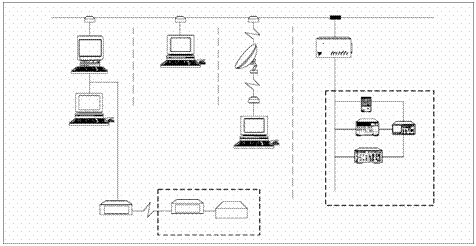User
Solution
![]()
Telectronics
Tests Defibrillators Remotely
User
Solution
![]()
Telectronics
Tests Defibrillators Remotely

![]() A t the end of it
all, there is the “document.” For Telectronics, an Australia-based
leader in the design and manufacture of implantable cardiac defibrillators
(ICDs), the “document,” or report, verifies the meticulous
test and measurement procedures that are carried out during the design
and development of an ICD. The ICD must undergo an
extensive test program of stimulation and measurement, in
which much of the data to be documented comes from a Tektronix TDS Series oscilloscope
screen.
A t the end of it
all, there is the “document.” For Telectronics, an Australia-based
leader in the design and manufacture of implantable cardiac defibrillators
(ICDs), the “document,” or report, verifies the meticulous
test and measurement procedures that are carried out during the design
and development of an ICD. The ICD must undergo an
extensive test program of stimulation and measurement, in
which much of the data to be documented comes from a Tektronix TDS Series oscilloscope
screen.

Incorporating the data from the oscilloscope into a report
always presented a problem. Telectronics used to photograph the screen,
photocopy it, then paste it into the document. This procedure resulted in poor
reproduction of documentation and was very expensive. In response to the need
for a better system, Ralph Dick, the Telectronics Product Support Group
manager, implemented an entirely new test and measurement culture based on
technologies from the “Open Measurement Solutions” alliance of National Instruments,
Sun Microsystems, and Telectronics
The Task
Operators needed to control the system
without additional training and without leaving their
desks. Thus, the group sought a turnkey system that would set up test
instruments, initiate tasks, collect data in a useful format, and
incorporate that data into the reports.
The solution
brings together National Instruments GPIB-ENET
interface kits, Sun SPARCstations, and Tektronix TDS Series oscilloscopes. The fully operational system can control 32 test benches, each containing up to 16 test instruments. In this multitasking environment, Telectronics engineers use the GPIB-ENET interface kit to connect the
workstations to the oscilloscopes in a system that tests ICDs on any test bench. Operators can also control and monitor tests from home via
a modem, or from overseas via satellite.
The Vital Link
The National
Instruments GPIB-ENET interface kit
connects Sun SPARCstations to GPIB instruments via an Ethernet network. The kit includes the GPIB-ENET controller and high-level NI-488.2MTM
multitasking driver software for
SunOS. Telectronics engineers
involved in the development and beta
testing of the GPIB-ENET use the
interface to access GPIB instruments
throughout the system. They can now test ICDs without leaving their
desks, or review data from anywhere in the
world via Ethernet. By using the GPIB-ENET kit, Telectronics engineers successfully developed the vital link between test instrumentation and operators. The GPIB-ENET has proven a very useful tool in a wide range of test
and measurement applications in a networking environment.
System Power
The Sun
SPARCstation runs the SunOS multitasking
software. The SPARCstation, when
connected to the rest of the system through
an Ethernet local area network, gives operators the required number-crunching power and easy access to control the
various tests and the results they obtain. The TDS Series oscilloscope is easy to operate and employs the sophistication of digitizing technology. Telectronics operators can allocate part of the
instrument menu to user-definable
functions, selecting functions such
as “Oscilloscope screen dump to file
and printer,” “Generate a tri-wave,” and
“Test set up.” In this arrangement, the oscilloscope not only makes the measurements, but also sets up the
other instrumentation involved, such
as the various function generators.
All this is implemented via the GPIB-ENET
interface kit under command from a workstation or terminal.
The Future
Telectronics is assessing the impact of
the system on product development and verification – the system has already
reduced the time needed to set up tests and procedures. In addition
to saving time and money, operators have more confidence in the quality
and integrity of the end product, the all important design
document. The system’s application software programs were written in
C by Product Support Group staff – however, the group plans
to replace the system C code with the LabVIEW® graphical programming instrumentation software. It has been an exciting experience for Telectronics to participate in the development and beta testing of a new technology, a new culture in
test and measurement, and to have had such
close cooperation with the three leading companies in the instrumentation field.